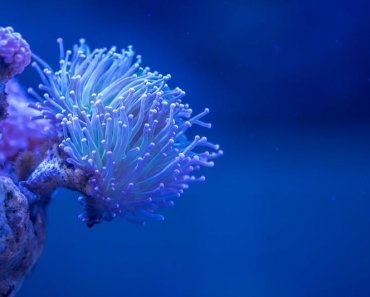Coral reefs are vital ecosystems that support over a quarter of marine life, provide food and income to hundreds of millions of people, and contribute significantly to the global economy.
But massive bleaching events caused by climate change have resulted in the unprecedented death of reefs around the world.
The issue is so severe that scientists are calling for global action.
While many scientists have initiated both large- and small-scale projects to help conserve and restore surviving reefs, Caroline Palmer, a coral health researcher and visiting research fellow at the University of Plymouth in England, believes that the secret to keeping coral reefs alive starts with understanding coral immunity.
The research is published in the journal Nature.
Coral Immunity
For over a decade, Palmer has been examining coral health from an immunological perspective. That is, identifying unique coral immune mechanisms and understanding what enables some corals to survive bleaching events, while others do not.
In her work, Palmer has found that coral reefs with higher immune defences are less likely to become diseased or bleached — much like how humans with stronger immune systems are less susceptible to illness.
Expanding on this observation, Palmer drew on a theory from insects that explains how coral immunity is based on corals’ coexisting relationship with specific microorganisms.
“Corals are animals that are only healthy when they have a specific set of tiny organisms living with them — like algae in their tissue and bacteria in their mucus,” said Palmer.
Together, the coral and its associated organisms are called a “holobiont.”
Immune interactions among each holobiont is what keeps a reef healthy and enables the associated organisms to change over time as environmental conditions change, according to Palmer.
New propositions
In her paper, Palmer presents a model of coral susceptibility, which describes how greater immunity enables coral to tolerate more damage before initiating an immune response.
The model also describes how tolerance may vary among corals, indicating their level of susceptibility to disturbances.
“We know that the higher the levels of immunity a coral has when it is healthy, the less likely it is to get diseased or to bleach — to lose the algae that give the coral energy, which can cause the coral to die. Understanding coral immunity is understanding what makes it healthy,” said Palmer.
She also explains that coral bleaching should be discussed within the context of holobiont immunity, despite the fact that it’s often thought of separately.
Palmer expands on this by saying that the coral stress response to bleaching is a result of a disturbance to the holobiont homeostasis, therefore making it directly related to immunity.
She argues that without discussing immune activity when examining coral bleaching, coral health research will be polarized and researchers will lack understanding on how corals acclimate to environmental changes.
Overall, Palmer proposes that studying coral health from an immunological perspective will provide greater insight into survival mechanisms and coral adaptability.
“We can use this information to select the corals most likely to survive future climate events — improving restoration project success and making them more cost effective,” she said. “We can also begin to learn what the impacts are of pollution (including sunscreens) are on coral immunity. This kind of data can be used to support policy changes and to better conserve coral reefs.”
Future work
Palmer has conducted studies on the Great Barrier Reef, and on reefs in Hawaii, Paiau, Puerto Rico, Florida, Indonesia, and is currently studying reefs in Costa Rica.
Her doctorate was the first research to look at the subject of coral immunity in depth, an area of research that remains understudied today.
“It hasn’t been incorporated into the way coral scientists think and pose their research questions. It usually isn’t measured in studies looking to quantify or establish coral health,” she said.
Despite this, Palmer hopes to continue working on coral immunology and ultimately expand the field to better conserve and restore coral reefs on a global scale.
In the meantime, she suggests that researchers who are initiating restoration efforts should combine cutting-edge science with citizen science and education.
“Try to develop targeted restoration projects, using background information and data that is specific to your local reef — the species there and the environment — each reef is different,” she said. “Find out which coral colonies have survived extreme events, if possible, and select your nursery site wisely. Try to work with a coral biologist and try to monitor coral health/immunity.”



